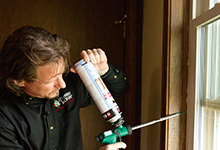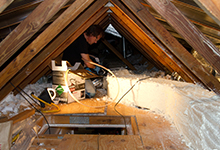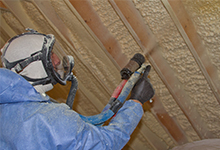In Business Since | License #
In Business Since | License #

Of all the many types of home insulation, spray foam has the competition beat in terms of R-value, resistance to mold and moisture damage, durability, air sealing, and versatility.
Spray foam insulation is more expensive than other types of insulation, but the extra cost is usually justified given the advantages it offers.
To discuss the use of spray foam insulation in your home, talk to your local Dr. Energy Saver dealer today! We have proven results for all of our insulation solutions.



3 spray foam options. For spot applications and sealing air leaks, spray foam is often applied from a disposable can (left photo). In the center photo, 2-part spray foam is used to seal and insulate attic ductwork. It’s applied from a pair of portable steel canisters. For big jobs, like insulating an entire roof, 2-part spray foam is applied from a specially equipped truck (right photo).
One way to understand how different spray foam products are used is to focus on how the material is dispensed (see photos). Inexpensive pressurized cans of “one-part” spray foam are used primarily for sealing gaps and cracks. 2-part spray foam comes in larger containers. With 2-part spray foam, it’s necessary to mix separate resin and catalyst compounds at the application nozzle. Combining these ingredients starts a chemical reaction that creates expanding foam. Contractors use small 2-part foam “kits” to air-seal an attic or to seal and insulate ductwork. To insulate an entire attic or wood-framed wall with spray foam, the resin and catalyst compounds are pumped to the application nozzle from 50-gal. drums in a specially equipped truck.
“SPF” stands for Spray Polyurethane Foam, the main type of 2-part, closed-cell spray foam used by insulation contractors. The large-scale insulation jobs performed by these contractors require special equipment as well as safety gear to protect the installer from chemical fumes during installation. When the foam cures and hardens just several minutes after application, it’s completely safe for as long as it stays in place.
When properly installed, SPF creates a highly insulated building assembly that’s also free of energy-wasting air leaks. To see if spray foam is a wise option for improving your home’s comfort and efficiency, contact Dr. Energy Saver today. Dr. Energy Saver provides Free Estimates for all SPF installations.
Looking for a price? Get a no cost, no obligation free estimate.